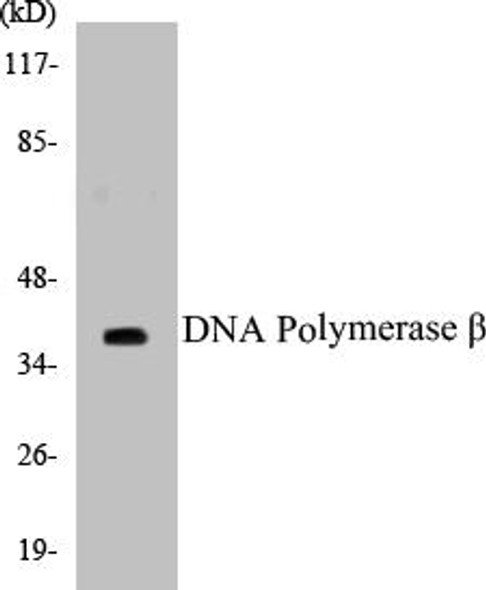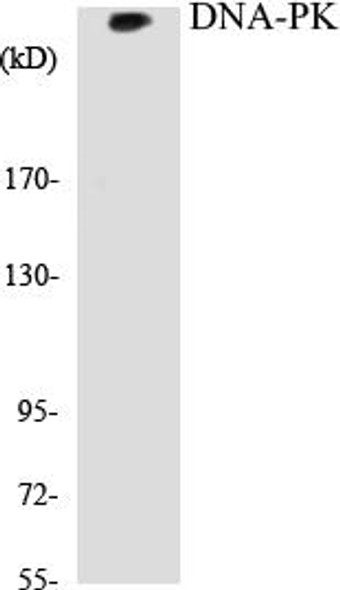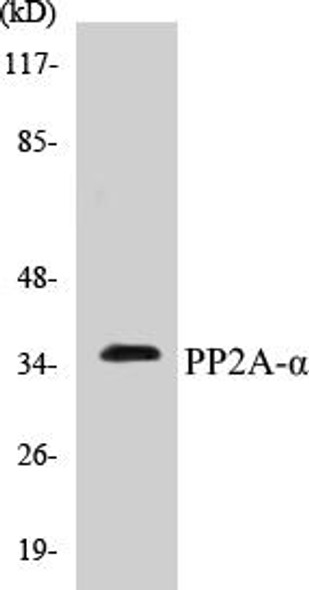Epigenetics and Nuclear Signaling
DNA Polymerase alpha Colorimetric Cell-Based ELISA
- SKU:
- CBCAB00377
- Product Type:
- ELISA Kit
- ELISA Type:
- Cell Based
- Research Area:
- Epigenetics and Nuclear Signaling
- Reactivity:
- Human
- Detection Method:
- Colorimetric
Description
| Product Name: | DNA Polymerase alpha Colorimetric Cell-Based ELISA |
| Product Code: | CBCAB00377 |
| ELISA Type: | Cell-Based |
| Target: | DNA Polymerase alpha |
| Reactivity: | Human |
| Dynamic Range: | > 5000 Cells |
| Detection Method: | Colorimetric 450 nmStorage/Stability:4°C/6 Months |
| Format: | 96-Well Microplate |
The DNA Polymerase alpha Colorimetric Cell-Based ELISA Kit is a convenient, lysate-free, high throughput and sensitive assay kit that can detect DNA Polymerase alpha protein expression profile in cells. The kit can be used for measuring the relative amounts of DNA Polymerase alpha in cultured cells as well as screening for the effects that various treatments, inhibitors (ie siRNA or chemicals), or activators have on DNA Polymerase alpha.
Qualitative determination of DNA Polymerase alpha concentration is achieved by an indirect ELISA format. In essence, DNA Polymerase alpha is captured by DNA Polymerase alpha-specific primary antibodies while the HRP-conjugated secondary antibodies bind the Fc region of the primary antibody. Through this binding, the HRP enzyme conjugated to the secondary antibody can catalyze a colorimetric reaction upon substrate addition. Due to the qualitative nature of the Cell-Based ELISA, multiple normalization methods are needed:
| 1. | A monoclonal antibody specific for human GAPDH is included to serve as an internal positive control in normalizing the target absorbance values. |
| 2. | Following the colorimetric measurement of HRP activity via substrate addition, the Crystal Violet whole-cell staining method may be used to determine cell density. After staining, the results can be analysed by normalizing the absorbance values to cell amounts, by which the plating difference can be adjusted. |
| Database Information: | Gene ID: 5422, UniProt ID: P09884, OMIM: 312040, Unigene: Hs.567319 |
| Gene Symbol: | POLA1 |
| Sub Type: | None |
| UniProt Protein Function: | POLA: Plays an essential role in the initiation of DNA replication. During the S phase of the cell cycle, the DNA polymerase alpha complex (composed of a catalytic subunit POLA1/p180, a regulatory subunit POLA2/p70 and two primase subunits PRIM1/p49 and PRIM2/p58) is recruited to DNA at the replicative forks via direct interactions with MCM10 and WDHD1. The primase subunit of the polymerase alpha complex initiates DNA synthesis by oligomerising short RNA primers on both leading and lagging strands. These primers are initially extended by the polymerase alpha catalytic subunit and subsequently transferred to polymerase delta and polymerase epsilon for processive synthesis on the lagging and leading strand, respectively. The reason this transfer occurs is because the polymerase alpha has limited processivity and lacks intrinsic 3' exonuclease activity for proofreading error, and therefore is not well suited for replicating long complexes. Belongs to the DNA polymerase type-B family. |
| UniProt Protein Details: | Protein type:DNA replication; DNA repair, damage; Nuclear envelope; EC 2.7.7.7; Nucleotide Metabolism - purine; Transferase; Nucleotide Metabolism - pyrimidine Chromosomal Location of Human Ortholog: Xp22.1-p21.3 Cellular Component: nucleoplasm; alpha DNA polymerase:primase complex; nuclear matrix; cytoplasm; nucleolus; nuclear envelope; chromatin; nucleus Molecular Function:protein binding; DNA binding; DNA primase activity; protein heterodimerization activity; 4 iron, 4 sulfur cluster binding; metal ion binding; nucleoside binding; nucleotide binding; DNA-directed DNA polymerase activity; chromatin binding; protein kinase binding Biological Process: DNA replication initiation; viral reproduction; DNA replication, synthesis of RNA primer; DNA strand elongation during DNA replication; leading strand elongation; DNA repair; lagging strand elongation; double-strand break repair via nonhomologous end joining; telomere maintenance via semi-conservative replication; G1/S-specific transcription in mitotic cell cycle; DNA synthesis during DNA repair; cell proliferation; telomere maintenance via recombination; mitotic cell cycle; DNA replication; telomere maintenance; G1/S transition of mitotic cell cycle Disease: N Syndrome |
| NCBI Summary: | This gene encodes the catalytic subunit of DNA polymerase, which together with a regulatory and two primase subunits, forms the DNA polymerase alpha complex. The catalytic subunit plays an essential role in the initiation of DNA replication. [provided by RefSeq, Mar 2010] |
| UniProt Code: | P09884 |
| NCBI GenInfo Identifier: | 106507301 |
| NCBI Gene ID: | 5422 |
| NCBI Accession: | NP_058633 |
| UniProt Secondary Accession: | P09884,Q86UQ7, |
| UniProt Related Accession: | P09884 |
| Molecular Weight: | 165,913 Da |
| NCBI Full Name: | DNA polymerase alpha catalytic subunit isoform 2 |
| NCBI Synonym Full Names: | DNA polymerase alpha 1, catalytic subunit |
| NCBI Official Symbol: | POLA1 |
| NCBI Official Synonym Symbols: | NSX; POLA; p180 |
| NCBI Protein Information: | DNA polymerase alpha catalytic subunit |
| UniProt Protein Name: | DNA polymerase alpha catalytic subunit |
| UniProt Synonym Protein Names: | DNA polymerase alpha catalytic subunit p180 |
| Protein Family: | Polar flagellin |
| UniProt Gene Name: | POLA1 |
| UniProt Entry Name: | DPOLA_HUMAN |
| Component | Quantity |
| 96-Well Cell Culture Clear-Bottom Microplate | 2 plates |
| 10X TBS | 24 mL |
| Quenching Buffer | 24 mL |
| Blocking Buffer | 50 mL |
| 15X Wash Buffer | 50 mL |
| Primary Antibody Diluent | 12 mL |
| 100x Anti-Phospho Target Antibody | 60 µL |
| 100x Anti-Target Antibody | 60 µL |
| Anti-GAPDH Antibody | 60 µL |
| HRP-Conjugated Anti-Rabbit IgG Antibody | 12 mL |
| HRP-Conjugated Anti-Mouse IgG Antibody | 12 mL |
| SDS Solution | 12 mL |
| Stop Solution | 24 mL |
| Ready-to-Use Substrate | 12 mL |
| Crystal Violet Solution | 12 mL |
| Adhesive Plate Seals | 2 seals |
The following materials and/or equipment are NOT provided in this kit but are necessary to successfully conduct the experiment:
- Microplate reader able to measure absorbance at 450 nm and/or 595 nm for Crystal Violet Cell Staining (Optional)
- Micropipettes with capability of measuring volumes ranging from 1 µL to 1 ml
- 37% formaldehyde (Sigma Cat# F-8775) or formaldehyde from other sources
- Squirt bottle, manifold dispenser, multichannel pipette reservoir or automated microplate washer
- Graph paper or computer software capable of generating or displaying logarithmic functions
- Absorbent papers or vacuum aspirator
- Test tubes or microfuge tubes capable of storing ≥1 ml
- Poly-L-Lysine (Sigma Cat# P4832 for suspension cells)
- Orbital shaker (optional)
- Deionized or sterile water
*Note: Protocols are specific to each batch/lot. For the correct instructions please follow the protocol included in your kit.
| Step | Procedure |
| 1. | Seed 200 µL of 20,000 adherent cells in culture medium in each well of a 96-well plate. The plates included in the kit are sterile and treated for cell culture. For suspension cells and loosely attached cells, coat the plates with 100 µL of 10 µg/ml Poly-L-Lysine (not included) to each well of a 96-well plate for 30 minutes at 37°C prior to adding cells. |
| 2. | Incubate the cells for overnight at 37°C, 5% CO2. |
| 3. | Treat the cells as desired. |
| 4. | Remove the cell culture medium and rinse with 200 µL of 1x TBS, twice. |
| 5. | Fix the cells by incubating with 100 µL of Fixing Solution for 20 minutes at room temperature. The 4% formaldehyde is used for adherent cells and 8% formaldehyde is used for suspension cells and loosely attached cells. |
| 6. | Remove the Fixing Solution and wash the plate 3 times with 200 µL 1x Wash Buffer for five minutes each time with gentle shaking on the orbital shaker. The plate can be stored at 4°C for a week. |
| 7. | Add 100 µL of Quenching Buffer and incubate for 20 minutes at room temperature. |
| 8. | Wash the plate 3 times with 1x Wash Buffer for 5 minutes each time. |
| 9. | Add 200 µL of Blocking Buffer and incubate for 1 hour at room temperature. |
| 10. | Wash 3 times with 200 µL of 1x Wash Buffer for 5 minutes each time. |
| 11. | Add 50 µL of 1x primary antibodies (Anti-DNA Polymerase alpha Antibody and/or Anti-GAPDH Antibody) to the corresponding wells, cover with Parafilm and incubate for 16 hours (overnight) at 4°C. If the target expression is known to be high, incubate for 2 hours at room temperature. |
| 12. | Wash 3 times with 200 µL of 1x Wash Buffer for 5 minutes each time. |
| 13. | Add 50 µL of 1x secondary antibodies (HRP-Conjugated AntiRabbit IgG Antibody or HRP-Conjugated Anti-Mouse IgG Antibody) to corresponding wells and incubate for 1.5 hours at room temperature. |
| 14. | Wash 3 times with 200 µL of 1x Wash Buffer for 5 minutes each time. |
| 15. | Add 50 µL of Ready-to-Use Substrate to each well and incubate for 30 minutes at room temperature in the dark. |
| 16. | Add 50 µL of Stop Solution to each well and read OD at 450 nm immediately using the microplate reader. |
(Additional Crystal Violet staining may be performed if desired – details of this may be found in the kit technical manual.)






